Continued from page 2
HOK and Zaha Hadid Architects—Their Presentations from the Avant-Garde
The next couple of sessions were also very exciting in a different way. Still very much about Bricsys but from entirely different aspirational perspectives from two different and very important global architecture firms.
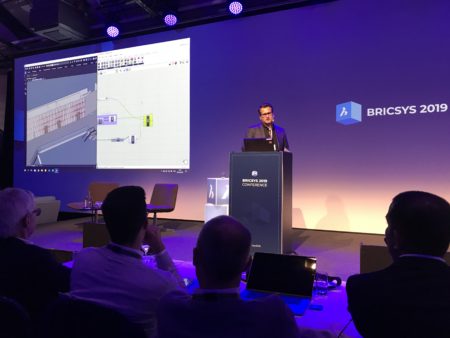
HOK demonstrated testing BricsCAD with Rhino 3D Grasshopper (inside Bricsys) on an existing HOK project.
First, Greg Schleusner, Director of Design Technology Innovation for HOK, talked about a pilot project using BricsCAD. HOK tested BricsCAD on a complex existing project, the Kentucky International Convention Center in Louisville. They tested and illustrated many of the unique BricsCAD features, such as BIMify, propagate and even the Rhino 3D Grasshopper and Enscape integrations.
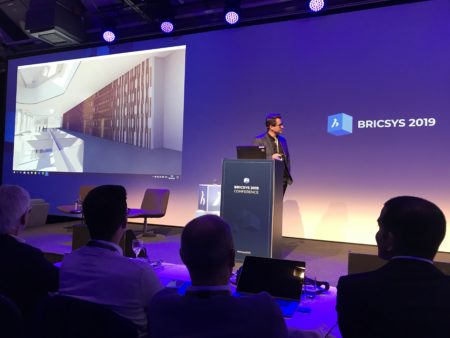
HOK showing BricsCAD V20 tests integrated workflow with Rhino 3D Grasshopper (inside Bricsys) and Enscape visualization.
The results for HOK was very impressive. It also showed the challenges of incorporating new tools into a setting like HOK. Greg was positive on the direction with BricsCAD in HOK, especially as the US market becomes more “productized.” He was also mindful of drivers that will enable partners and competitors to begin to adopt these “broad, powerful, and amazing” work Bricsys is already doing. HOK is also doing more with BricsCAD directly—more on that below.
Next, Joris Pauwels of Zaha Hadid Architects presented the Antwerp Port House with Paulus Present of Bureau Bowtechniek. The project was remarkable and very complex. Taking an almost invisible seat at the table for this work was Bricsys 24/7 for construction collaboration.
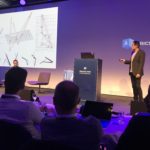
Zahad Hadid Architects (ZHA) walked through the complex structural coordination accomplished through BricsCAD 24/7.
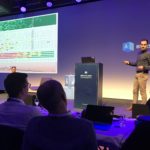
A What-If scenario posed showing how powerful BricsCAD V20 workflows could have been if available instead of manual spreadsheets.
Amongst the very design-oriented complexity, including a challenging structural parti and complex facade randomization/optimization, this quiet support work was not pronounced or focused upon during the presentation. The aspirational, sophistication and success of the solution showed itself. Just the way a collaborative CDE should be—it just worked.
BricsCAD Mechanical
The continued central importance and focus for BricsCAD Mechanical was demonstrated throughout the conference (integrated with the Ultimate workflow described above, for instance). The sheet metal strength and company history, features and development for a parametric direct assembly modeling (non-history based) continue to be unique in the industry (and even more so as combined with BIM workflows in the same toolset—”Alone in the Classroom,” as Christian Lecomte noted).
New are more automatic annotations, efficiencies and communication capabilities. The focus of the demonstration was the escalator parametric model that was resized and automatically recounted parts from 6M to 10M in the new BOM table feature. Also shown was a new suppress feature for a rapid efficient level of detail definition depending on context and computer. AI features including an improved “Propagate” were again demonstrated in the mechanical model workflow to automate flange detailing. Tab and hem detailing were also added to this new version. Finally, the technical drawing improvements included fully exploded view generation in all directions with optional trailing lines.

Complex part constructed as part of BricsCAD Mechanical V20 demo and run through sheet metal precess resulting in a part ready for manufacture.
At the end of the BricsCAD Mechanical presentation, and as an echo to the high design presentations of HOK and Zaha Hadid, Bricsys invited in a third architectural design firm to present showing the potentials Bricsys brings to the process of creativity, particularly when complex.

Tal Friedman talking about his firm FOLDSTRUCT and its alignment with the new BricsCAD V20 toolsets.
Tal Friedman, CEO of FOLDSTRUCT, whose design methods aspire to realize visually complex freeform icons for every building through pragmatic generative design and construction solutions. Developing innovative Rhino 3D Grasshopper technics for the designs and then rationalized analysis and fabrication, FOLDSTRUCT has a strong portfolio for this design vision.
And then the Bricsys Mechanical team put on a short demonstration of the advanced BricsCAD Mechanical version 20 capabilities with Rhino/ Grasshopper Connection were shown to showcase the new capabilities and how very innovative and powerful the Bricsys solution can be with even radical form design and fabrication.
The Collective
Working with DWG as the foundation for a “Geometry First” philosophy that Bricsys uses to prioritize its core development, it seemed natural that they have a natural posture that is industry-neutral in format and also very open for specialized API/3rd party development such as the AX3000 mechanical solution. And as a founding member of the Open Design Alliance (ODA), which also presented at the Bricsys 2019 conference, it made a lot of sense that Bricsys would start a new initiative called “The Collective” which was officially announced on day two of the conference by Erik De Keyser. AX3000 was held up and described as a tight, deep and specialized integration on top of a BricsCAD foundation. Something where Bricsys would always stay neutral and with choice, but with much functionality in one product. AX3000 was the first member of “The Collective”. Bricsys sees several application partners becoming part of “The Collective,” but seemed very serious in expectations for “tight and deep” integrations into the Bricsys technologies. As Erik described, Bricsys is aiming to create an extensible solution with Bricsys at the core for “The ultimate user experience” with all involved ACTING AS ONE! He even earnestly and cheekily remarked, “All are friends.”
The Announcement
Bricsys did have a scheduled announcement at the end of the first day. It was very intriguing. Bricsys, Leica, and HOK announced an agreement around the research and development of PT (point) Cloud-based AEC industry workflows for BIM. This announcement was apparently still ironing out as a very robust and official press release followed a few days right after the conference. More than intriguing, this consortium aims to solve nothing less than “automatic conversion of point clouds into solid geometry—with the resultant geometry automatically classified using Bricsys’ AI technology. A very impressive freshman year of Bricsys/Hexagon development (with Hexagon member Leica and then HOK) that has the potential to shake up the building and infrastructure markets.
Conclusion and Analysis
Bricsys has built a toolset that bridges AEC and MCAD for both industry pipelines with interdisciplinary connectivity and all in a very extensible, (.dwg)-based and open standards-based platform. This makes it a very unique offering. As we have said before, Bricsys fully believes that the (.dwg) file format has much headroom for future growth and can form a superior base for industry-first innovations. We have written quite a bit about the future of this de-facto file format from the ODA’s perspective here and for the reader who has some history—whether AutoCAD based or some other (.dwg) based tool—our report on the future of this CAD file standard is quite interesting.
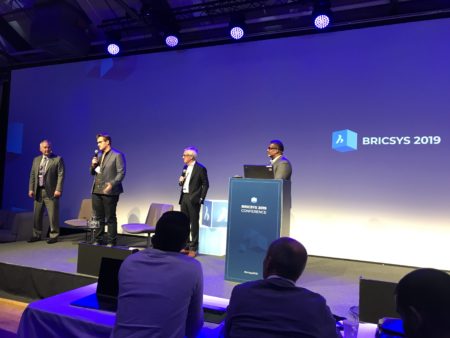
Bricsys, HOK, and Leica take the stage to announce a cooperative partnership around automating point cloud processing for BIM workflows.
Both its innovations around the (.dwg) file format, its ambitious AI (using machine learning) toolsets with more to come, and its inter-disciplinary AEC to MCAD workflows—highly meaningful in a more design-to-fabrication workflows future—have all garnered the attention of significant customer heavyweights. There is no higher marquee design firm in the world of Architecture than Zaha Hadid Architects (ZHA) and HOK is one of the most award-winning enterprise-class firms in the world. So what does this tell us?
Two things really. Firstly, it comments on the tools these firms already use today and their shortcomings. The speakers didn’t speak to this directly so we can mostly conjecture. Secondly, Bricsys is doing an incredibly intelligent thing in integrating Rhino 3D + Grasshopper inside their BIM solution as well as their larger BricsCAD tools. MCAD customers can use Rhino 3D + Grasshopper as well and with great utility, as we see. It is important to state that leading architecture firms around the world are currently deeply invested in finding ways to automate the CD phase of work, buying the time they can spend in the design phase and in particular using that time to explore more solutions and develop more unique workflows that distinguish their firm’s work. The emphasis Bricsys is laying on AI dovetails beautifully with the integrations of McNeel’s tools. This will lift creativity, reduce the complexity in BIM processes such as classifying elements and enable a “one tool” source for both the creative act and the documentation act in your processes.

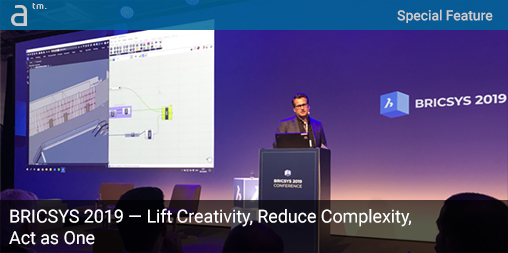




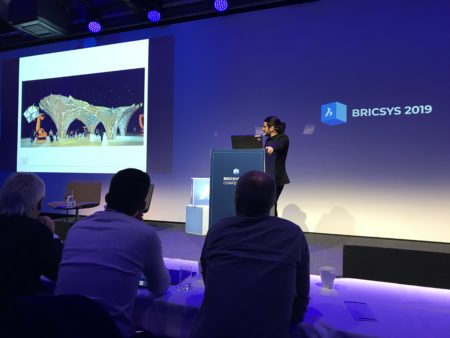


Reader Comments
Comments for this story are closed